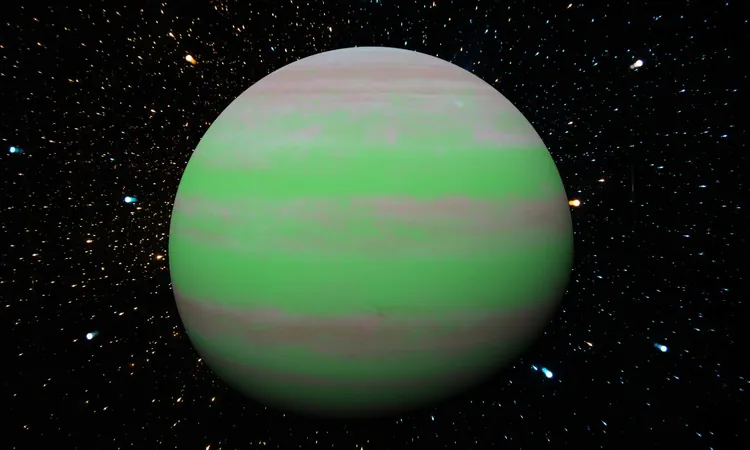
Astronomers Uncover a Massive New Planet Lurking Just 124 Light-Years Away!
2025-08-26
Author: Sarah
Meet GJ 2126 b: The Eccentric Giant!
A remarkable new discovery has astronomers buzzing: a giant planet known as GJ 2126 b has been identified orbiting a nearby star just 124 light-years from Earth. What makes this planet so fascinating? Its wildly eccentric orbit stretches and compacts as it swings around its star in a chaotic dance, completing one orbit every 272.7 days.
A Planet Unlike Any Other!
GJ 2126 b boasts a minimum mass of approximately 1.3 times that of Jupiter, and orbits at a distance of around 0.71 astronomical units—about 66 million miles—from its host star. Its highly elongated orbit, with an eccentricity of 0.85, suggests that this planet has experienced a tumultuous past, possibly influenced by gravitational encounters with other celestial bodies.
Revolutionary Discovery Techniques!
The discovery was made possible using the HARPS spectrograph at the European Southern Observatory. By analyzing 112 radial velocity measurements, researchers were able to detect the star's subtle wobbles that indicate the presence of GJ 2126 b. They mined public datasets that encompassed thousands of stellar observations, which allowed them to identify this planetary signal that others might have overlooked.
Extreme Temperature Swings!
The unusual orbit of GJ 2126 b leads to significant changes in temperature and atmospheric pressure throughout the year, stirring up intrigue among scientists about the planet's atmosphere and climate. Such extreme fluctuations could reshape how giant planets are understood in terms of their formation and evolution in the cosmos.
A Star Worth Exploring!
The host star, classified as an M-dwarf, is relatively cool and low in mass, with about 65% the mass of our Sun. Its close proximity to Earth makes future observations both feasible and exciting. Follow-up studies may help pinpoint GJ 2126 b's radius and even uncover its exact mass.
Potential for Surprises!
Interestingly, due to the uncertain tilt of GJ 2126 b's orbit, its mass could potentially classify it as a brown dwarf—an intermediate between a planet and a star. However, researchers believe that their current data and modeling strongly favor its classification as a planet.
What’s Next for GJ 2126 b?
With further observation campaigns planned, astronomers are eager to uncover more about GJ 2126 b's mysteries. Future studies could reveal hidden companions or assist in refining the planet's mass estimate. As technology advances, we’re inching closer to understanding these extraordinary worlds, and GJ 2126 b is just the beginning!
A New Era in Exoplanet Research!
This astonishing discovery is poised to challenge existing theories about planet formation and dynamics. GJ 2126 b exemplifies the wonders of our universe, reminding us that even within our cosmic neighborhood, there are still countless mysteries waiting to be unraveled!




 Brasil (PT)
Brasil (PT)
 Canada (EN)
Canada (EN)
 Chile (ES)
Chile (ES)
 Česko (CS)
Česko (CS)
 대한민국 (KO)
대한민국 (KO)
 España (ES)
España (ES)
 France (FR)
France (FR)
 Hong Kong (EN)
Hong Kong (EN)
 Italia (IT)
Italia (IT)
 日本 (JA)
日本 (JA)
 Magyarország (HU)
Magyarország (HU)
 Norge (NO)
Norge (NO)
 Polska (PL)
Polska (PL)
 Schweiz (DE)
Schweiz (DE)
 Singapore (EN)
Singapore (EN)
 Sverige (SV)
Sverige (SV)
 Suomi (FI)
Suomi (FI)
 Türkiye (TR)
Türkiye (TR)
 الإمارات العربية المتحدة (AR)
الإمارات العربية المتحدة (AR)